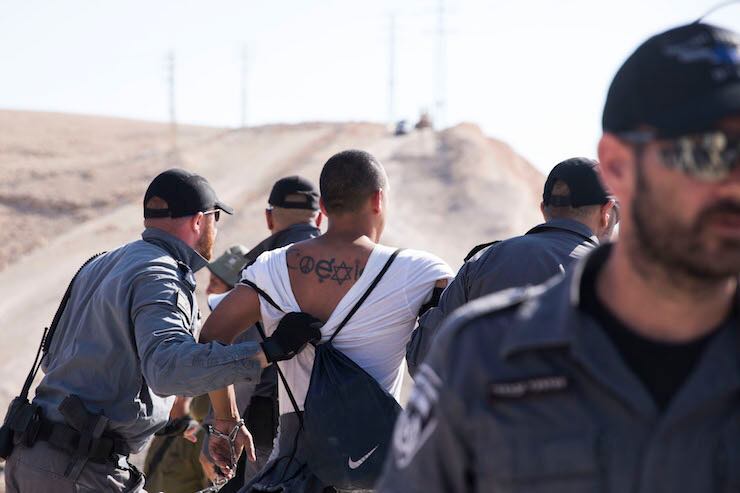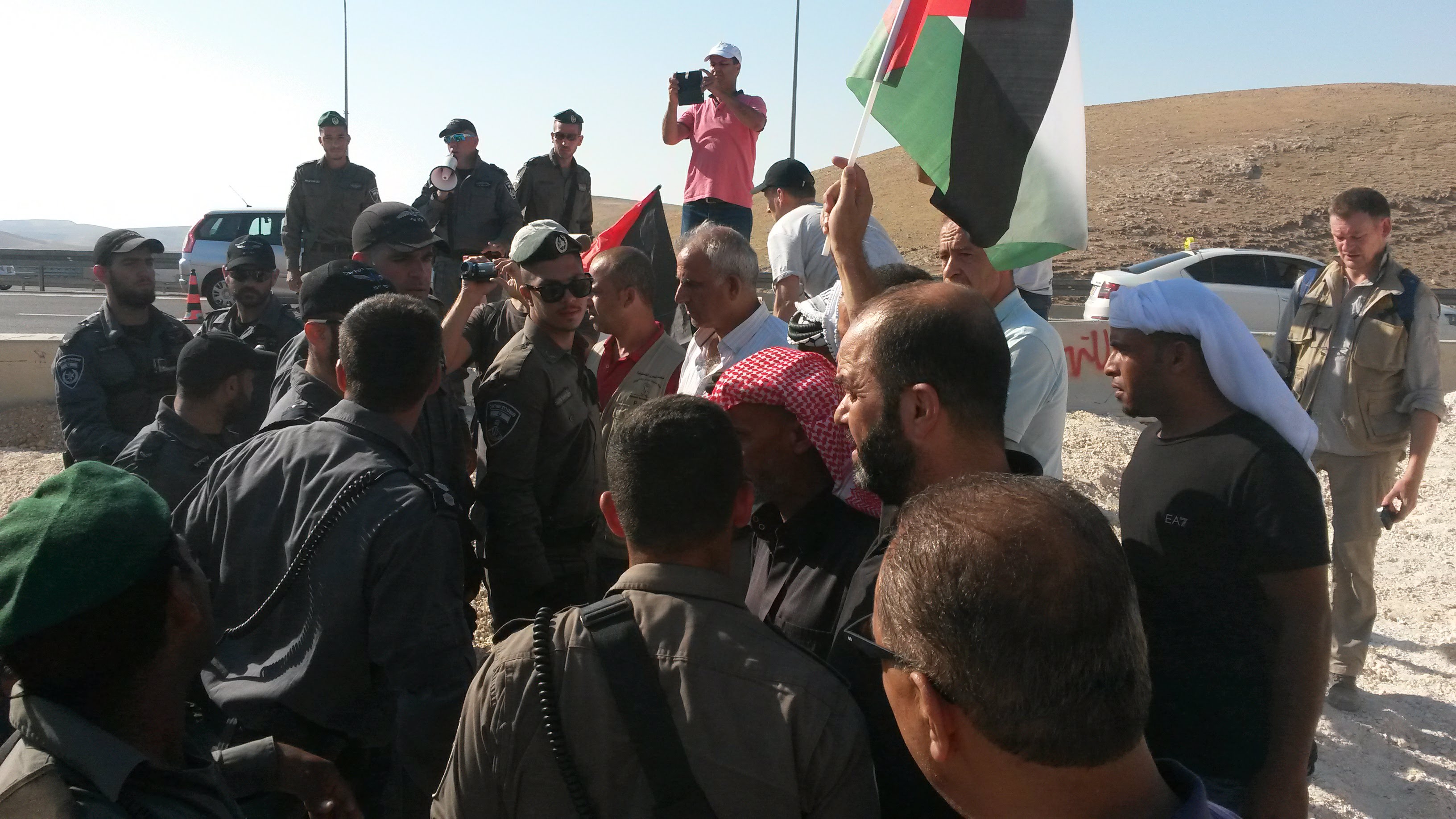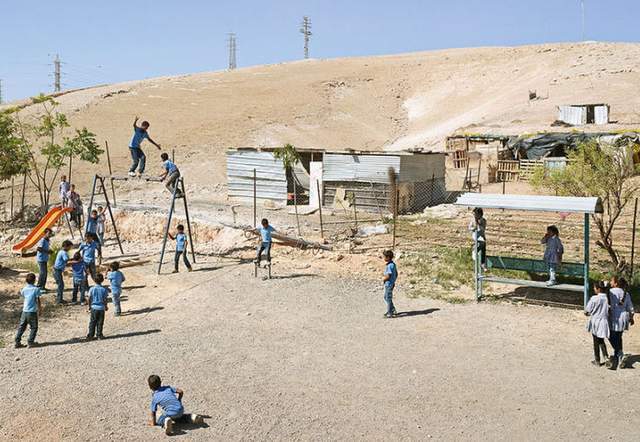Tag: Khan Al Ahmar
-
Experiencing arrest in Khan al-Ahmar, threatened by demolition by Israeli forces
26th July 2018 | Steve Dhiman, International Solidarity Movement | Khan al-Ahmar, occupied Palestine An ISM volunteer describes his experience of being arrested and almost deported by Israeli forces On Wednesday, the 4th of July, I began training with the International Solidarity Movement, an organization where Palestinians and Israelis, Jewish people and Muslims work…
-
Israel begins demolition of Khan Al Ahmar and uses violence against peaceful protesters
International Solidarity Movement, Khan Al Ahmar, Palestine Friday 6th June This week, Israeli forces began preparing for the demolition of the Bedouin village Al-Khan Al-Ahmar, in between Jerusalem and Jericho in the West Bank of Palestine. They met village residents and protesters with extreme violence on Wednesday and Thursday in an attempt to clear the…
-
Khan al Ahmar watches the World Cup
26th June 2018 | International Solidarity Movement, Ramallah Team | Khan al Ahmar, occupied Palestine The Jahalin tribe of Khan al Ahmar were forcibly relocated by Israel from the Negev Desert in 1951. The village’s current site in Palestine is located between the illegal Israeli settlements of Ma’ale Adumim and Kfar Adumim. Israel wants to…



